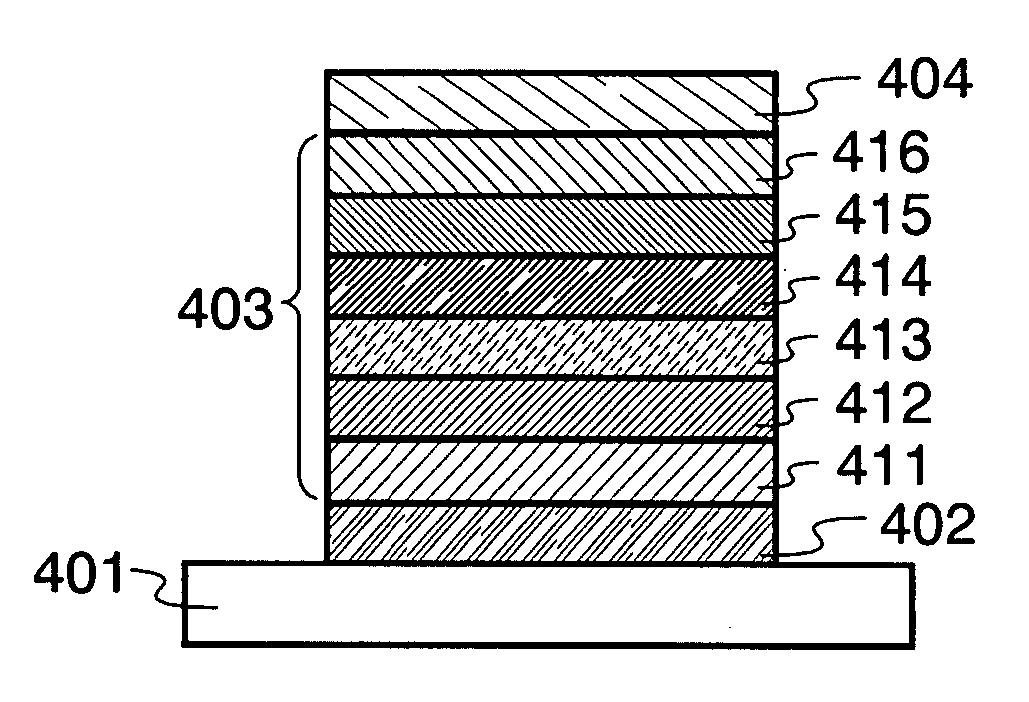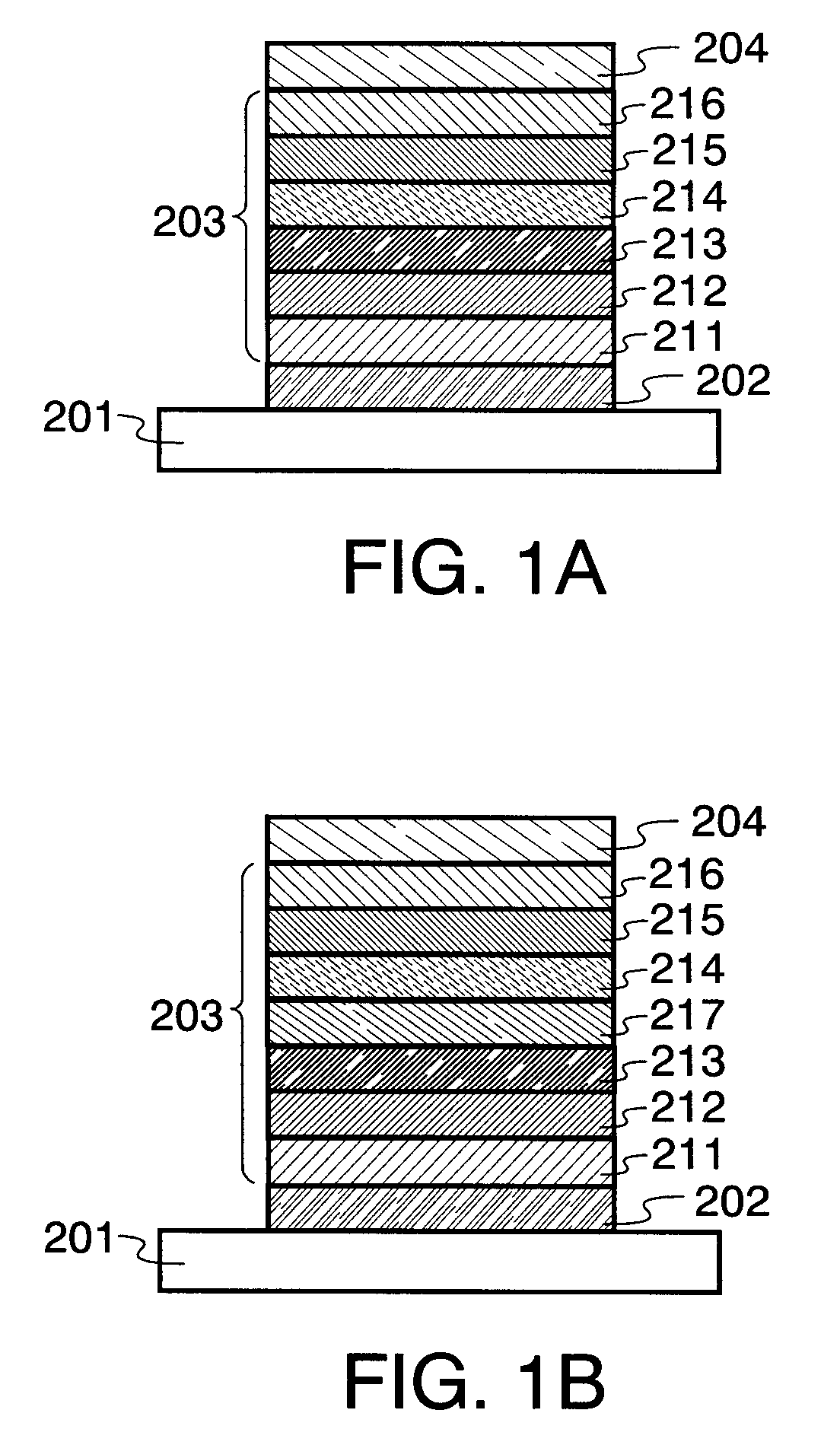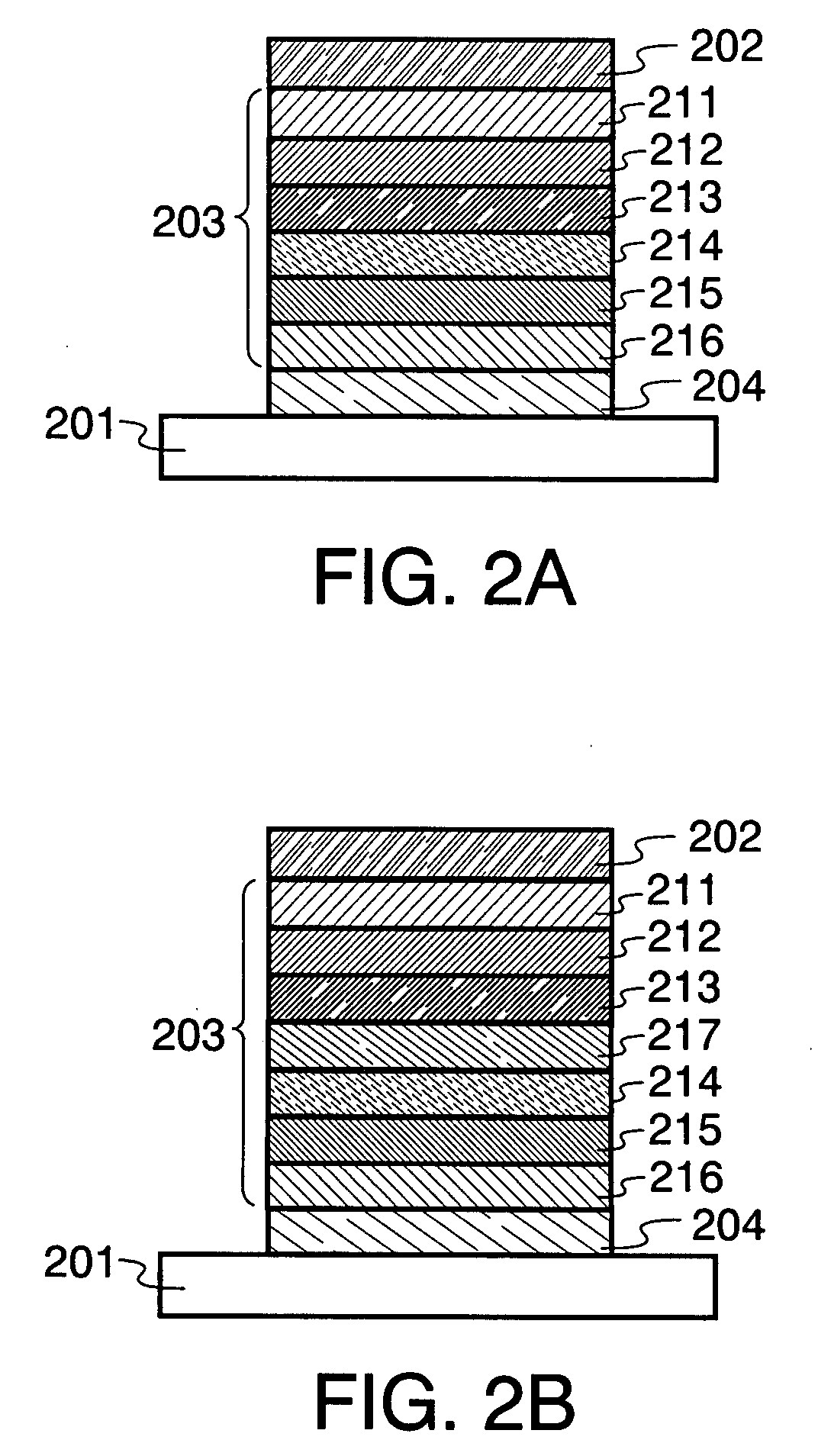Ligth-emitting element, light-emitting device, and electronic device
a technology of light-emitting elements and ligth-emitting elements, which is applied in the direction of discharge tube/lamp details, organic semiconductor devices, discharge tubes luminescnet screens, etc., can solve the problems of short life of light-emitting elements and cannot be easily achieved, so as to reduce power consumption, suppress changes in carrier balance over time, and high luminous efficiency
- Summary
- Abstract
- Description
- Claims
- Application Information
AI Technical Summary
Benefits of technology
Problems solved by technology
Method used
Image
Examples
embodiment mode 1
[0091] One example of a light-emitting element of the invention will be described with reference to FIG. 1A. This embodiment mode illustrates a light-emitting element which includes a layer for controlling the movement of electrons as a layer for controlling the movement of carriers. That is, in the invention, changes in carrier balance over time are suppressed by using the layer for controlling the movement of carriers, so that the carriers are recombined at a position away from electrodes, whereby the lifetime of the light-emitting element is prolonged.
[0092] The light-emitting element of the invention has a plurality of layers between a pair of electrodes. The plurality of layers is stacked by combining layers made of a compound with a high carrier injection property and a compound with a high carrier transporting property so that a light-emitting region is formed at a position away from the electrodes, i.e., so that carriers are recombined at a position away from the electrodes...
embodiment mode 2
[0176] This embodiment mode will describe one example of a light-emitting element of the invention which differs from that shown in Embodiment Mode 1, with reference to FIG. 5A. This embodiment mode illustrates a light-emitting element which includes a layer for controlling the movement of holes as a layer for controlling the movement of carriers. The light-emitting element of the invention has a plurality of layers between a pair of electrodes. The plurality of layers is stacked by combining layers made of a compound with a high carrier injection property and a compound with a high carrier transporting property so that a light-emitting region is formed at a position away from the electrodes, i.e., so that carriers are recombined at a position away from the electrodes.
[0177] In this embodiment mode, a light-emitting element includes a first electrode 402, a second electrode 404, and an EL layer 403 provided between the first electrode 402 and the second electrode 404. Note that in ...
embodiment mode 3
[0225] This embodiment mode will describe a light-emitting element in which a plurality of light-emitting units in accordance with the invention is stacked, with reference to FIG. 9. The light-emitting element is a stacked-type light-emitting element which has a plurality of light-emitting units between a first electrode and a second electrode. A structure similar to that of the EL layer 203 shown in Embodiment Mode 1 or the EL layer 403 shown in Embodiment Mode 2 can be used for each light-emitting unit. In other words, the light-emitting element described in each of Embodiment Modes 1 and 2 is a light-emitting element having a single light-emitting unit. In this embodiment mode, a light-emitting element having a plurality of light-emitting units will be described.
[0226] In FIG. 9, a first light-emitting unit 511 and a second light-emitting unit 512 are stacked between a first electrode 501 and a second electrode 502. A charge generation layer 513 is provided between the first lig...
PUM
 Login to View More
Login to View More Abstract
Description
Claims
Application Information
 Login to View More
Login to View More - R&D
- Intellectual Property
- Life Sciences
- Materials
- Tech Scout
- Unparalleled Data Quality
- Higher Quality Content
- 60% Fewer Hallucinations
Browse by: Latest US Patents, China's latest patents, Technical Efficacy Thesaurus, Application Domain, Technology Topic, Popular Technical Reports.
© 2025 PatSnap. All rights reserved.Legal|Privacy policy|Modern Slavery Act Transparency Statement|Sitemap|About US| Contact US: help@patsnap.com



